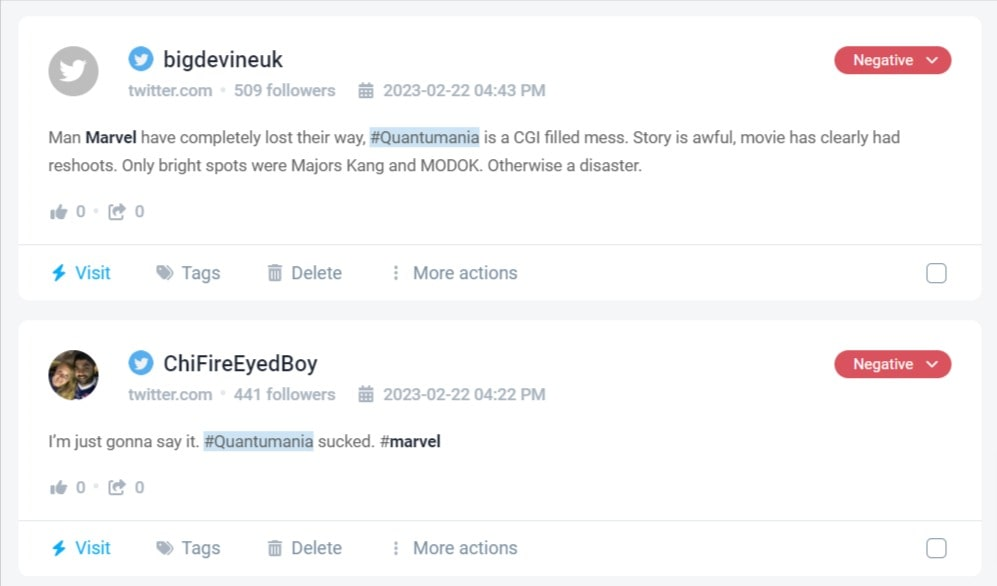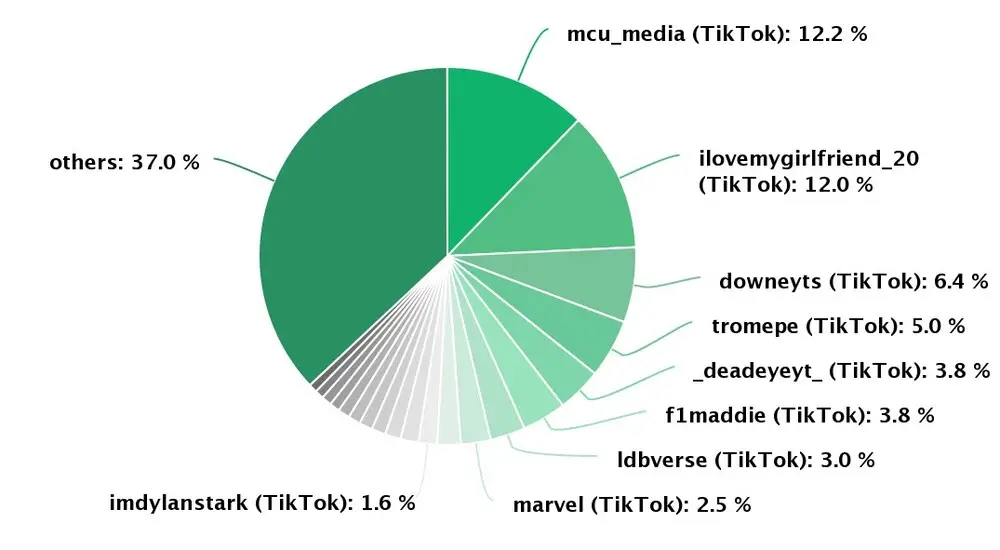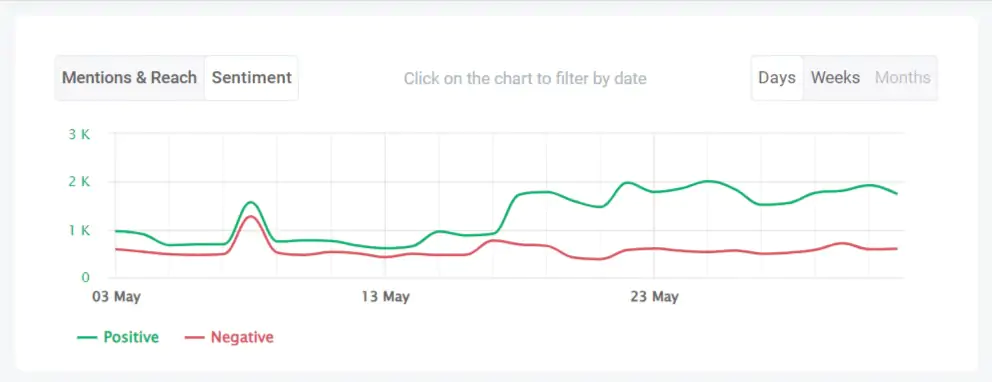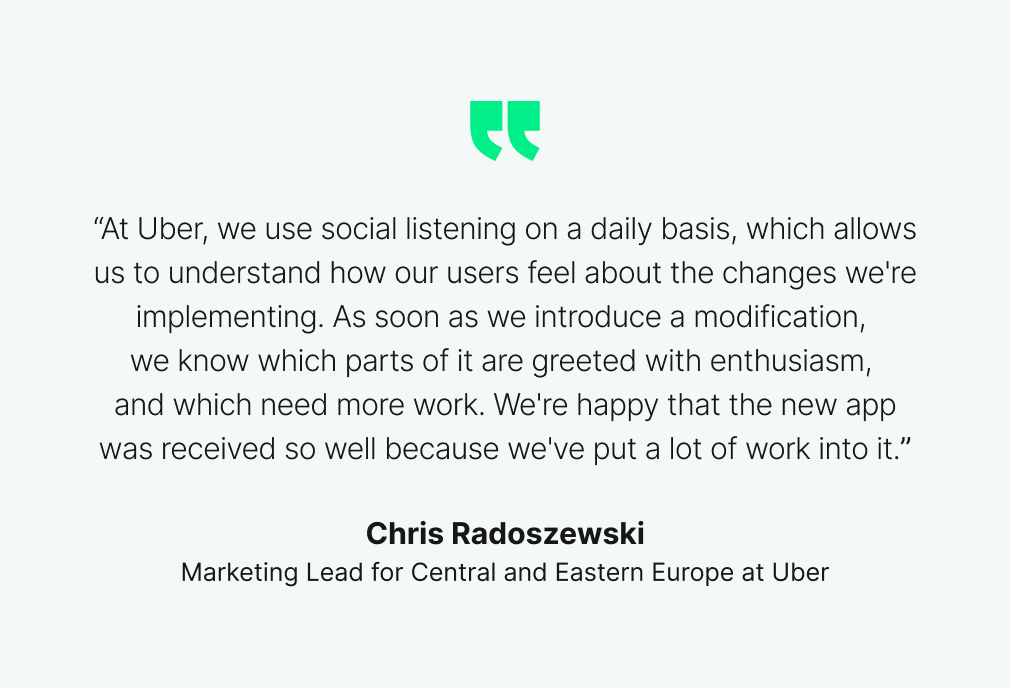How to Master AI-powered Sentiment Analysis in 2025?
Table of contents
How do customers feel about your products or services? That’s important question business owners shouldn’t neglect. Positive and negative words matter. They can boost your business efforts or initiate a crisis. The good news is that you can measure customer satisfaction through sentiment analysis.
We can definitely tell that with the development of e-commerce, SaaS tools, and digital technologies, sentiment analysis is becoming more and more popular. So here’s a guide to sentiment analysis.
What is sentiment analysis?
Sentiment analysis (also known as opinion mining, or emotion AI) is a method of analyzing text data to identify its intent.
The goal is to automatically recognize and categorize opinions expressed in the text to determine overall sentiment.
Sentiment analysis definition
Sentiment analysis is the process of analyzing online text to determine the emotional tone they carry. It aims to detect whether sentiment around a brand or topic is positive, negative, or neutral. Simply put, sentiment analysis determines how the author feels about a certain topic.
Positive sentiment may be expressed using words such as “good”, “great”, “wonderful”, and “fantastic”.
Negative sentiment may be expressed using words such as “bad”, “terrible”, “hate”, and “disgusting”.

Start sentiment analysis now!
Sentiment analysis tools like Brand24 can accurately handle vast data that include customer feedback.
What is more, you can conduct analysis for any topic you want.
All you need to do is set up a project using a tool and track the keywords that matter to you.
Thanks to performing sentiment analysis, you will be able to:
- Get a better understanding of how your customers feel about your brand
- Gain insights that will help you improve your products and services
- Make your business more responsive to customer feedback
- React quickly to negative sentiment and turn it around
- Monitor your brand’s reputation in real-time
- Keep your customers happy by always putting their feelings first
Natural language processing (NLP) sentiment analysis
What is NLP sentiment analysis? Here’s an explanation written by Krzysztof Rajda, Head of AI at Brand24:
With the rapid growth of the Internet – a primary source of information and place for opinion sharing – a necessity arises to gather and analyze mentions on a given topic.
Massive data collection is achievable using Internet Monitoring Tools. However, manual analysis of tens of thousands of texts is time and resource-consuming – and this is where Artificial Intelligence (AI) becomes extremely useful.
Natural Language Processing (NLP), part of AI dealing with text analytics, is an essential technique in the modern world to discover the unknown from Internet Monitoring results.
One of the most useful NLP tasks is sentiment analysis – a method for the automatic detection of emotions behind the text.
Sentiment can be analyzed at different levels – from identifying positive or negative opinions, quantifying the level of positivity or negativity, to even identifying the fine-grained emotion behind the opinion (e.g., happiness, anger, sadness, etc.).
Start AI-powered sentiment analysis now!
How to do sentiment analysis?
Performing accurate sentiment analysis without using an online tool can be difficult.
Why is that?
Conducting analysis based on a large volume of data is time-consuming.
Sure, you can try to research and analyze mentions about your business on your own, but it will take lots of your time and energy. Furthermore, the risk of human error is quite significant in that case.
Let’s take a look at the example.
In the last 30 days, the Nike brand gained over 428k mentions.
Can you imagine analyzing each of them and judging whether it has negative or positive sentiment?
I can’t.
With a Brand24 tool, I detected that about 123k of those mentions are positive, 9k are negative, and the rest is neutral.
It took me less than 3 minutes to discover this insight.
How did I do that?
I simply clicked on the sentiment filter, and the data was presented to me in a user-friendly Brand24 dashboard.

To get started, there are a couple of sentiment analysis tools on the market. What’s interesting, most media monitoring tools can perform such an analysis.
One of the most affordable and effective tools that offer solid sentiment analysis is Brand24. It offers a trial account free of any cost.
Recently, we implemented a new sentiment analysis model. Right now, the users of the Brand24 app are using the best technology possible to evaluate the sentiment around their brand, products, and services.
Sentiment analysis example
I analyzed the Marvel brand because it had some ups and downs recently. Let’s find out what happened using the Brand24 tool.
Overall sentiment
The overall sentiment around the Marvel brand is positive. In the last 30 days, this brand noted 128k mentions.

Twitter, news, and blogs are the main source of mentions.

Sentiment over time
In the last 5 months, Marvel received almost 2 million mentions. Over 528k are positive, 284k are negative, and the rest are neutral.
Looking at the sentiment chart, you see the rise of negative mentions around 18th February.

After selecting February as a time range, I discovered that fans didn’t like the Ant-Man and the Wasp: Quantumania movie.
Here, you can see some mentions with negative sentiment:

Additionally, on April 11th, I noticed a spike in mentions. Through the trending hashtags feature, I was able to determine that #themarvels was a popular trend that day. This trend was associated with the release of The Marvels movie trailer.
As you can see, thanks to sentiment analysis, you can monitor changes in customer emotions easily.
Check your customers’ emotions!
Sentiment by topic
Thanks to the Topic Analysis feature, I discovered the most important and trending topics related to Marvel.
Here, you can see the sentiment of 3 topics that generate the most buzz:
- Marvel Spider-Man: Discussion about Spider-Man and related characters in the Marvel universe, including Peter Parker, Miles Morales, and Venom. This topic generates lots of positive mentions.

- Marvel Updates: Updates on Marvel and Disney+ series and movies. Compared to the previous topic, updates generate more negative sentiment.

- GotG 3 Release: Discussion about the Guardians of the Galaxy Vol. 3 movie and its availability on streaming services. This topic has mainly positive sentiment.

Sentiment of speaking authors
Now, let’s detect who is talking about Marvel in a positive and negative way.


Sentiment of a discussion
During the last 5 months, discussions around Marvel were mainly positive.

Sentiment has a significant impact on the Reputation Score. Unfortunately, over the past 5 months, the reputation of Marvel has suffered.
The reason for this was the low ratings of the Ant-Man movie and the delays in producing other films and TV series.
But recently, Marvel’s reputation among fans has significantly improved thanks to the success of the Guardians of the Galaxy movie.

What is a sentiment score?
One of the means to assess sentiment is sentiment score.
Sentiment score is a scaling system that reflects the emotional depth of emotions in a piece of text.
Sentiment score detects emotions and assigns them sentiment scores, for example, from 0 up to 10 – from the most negative to most positive sentiment. Sentiment score makes it simpler to understand how customers feel.
There are various ways to calculate a sentiment score, but the most common method is to use a dictionary of negative, neutral, or positive words. The text is then analyzed to see how many negative and positive words it contains. This can give us a good idea of the overall sentiment of the text.
Analyze sentiment with Brand24!
To calculate a sentiment score, various factors are taken into account, such as the number and type of emotions expressed, the strength of those emotions, and the context in which they are used. Sentiment scores can be useful for a variety of purposes, such as calculating customer satisfaction or determining whether a text is positive or negative in nature.
At Brand24, we analyze sentiment using a state-of-the-art deep learning approach. Our neural nets were trained on thousands of texts to get knowledge about human language and recognize sentiment well. If you find any mistakes, let us know so we can improve our solution and serve you better.
Why is it worth using a dedicated tool for sentiment analysis?
The tool will do the job for you. Actually, there are lots of reasons why it is worth using it.
First and foremost, with a proper tool, you will be able to detect positive and negative sentiments easily.

Secondly, it saves time and effort because the process of sentiment extraction is fully automated – it’s the algorithm that analyses the sentiment datasets, therefore human participation is sparse.
Can you imagine browsing the web, finding relevant texts, reading them, and assessing the tone they carry manually? It’s doable but takes ages.
Thirdly, it’s becoming a more and more popular topic as artificial intelligence, deep learning, machine learning techniques, and natural language processing technologies are developing.
Fourthly, as the technology develops, sentiment analysis will be more accessible and affordable for the public and smaller companies as well.
And lastly, the tools are becoming smarter every day. The more they’re fed with data, the smarter and more accurate they become in sentiment extraction.
Besides the sentiment analysis system, you will also gain access to many valuable metrics, such as:

See our guide on Social Listening Metrics.
Set up the Brand24 tool and try sentiment analysis!
What can you use sentiment analysis for?
Text analytics and opinion mining find numerous applications in e-commerce, marketing, advertising, politics, market research, and any other research.
Let’s have a closer look at how text analysis benefits these areas.
01 Brand reputation management
The internet is where consumers talk about brands, products, services, share their experiences and recommendations. Social platforms, product reviews, blog posts, and discussion forums are boiling with opinions and comments that, if collected and analyzed, are a source of business information.

Discover our client’s success story — read the case study.
When it comes to brand reputation management, sentiment analysis can be used for brand monitoring to analyze the web and social media buzz about a product, a service, a brand, or a marketing campaign.
Online analysis helps to gauge brand reputation and its perception by consumers.

This is how businesses can discover consumer, media and expert attitudes towards their products, services, marketing campaigns and brands expressed on discussion forums, online review sites, news sites, blogs, Twitter and other publicly available online sources.
Brand monitoring is an important area of business for PR specialists and sentiment analysis should be one of their tools for everyday use.
Take a look at the example detected by the Brand24 tool.
The online Reputation Score for Boing is in the top 5% of worst brands. Two events negatively affected its brand’s image.
The chart shows that the company struggled with issues because of a plane crash in China and the publication of weak quarterly results.

02 Customer feedback
Companies use sentiment analysis to analyze customers’ opinions.
These days, consumers use their social profiles to share both their positive and negative experiences with brands.
A sentiment analysis tool can identify mentions conveying positive pieces of content showing strengths, as well as negative mentions, showing bad reviews and problems users face and write about online.

In some cases, this makes customer service far more attentive and responsive, as the customer support team is informed in real-time about any negative comments. The support folks need to know about any blunders as quickly as possible. Because the mentions get detected extremely quickly, customer service has the advantage of rapid reaction time. This makes customer experience management much more seamless and enjoyable.
Our wonderful content manager, Chia, made a video that sums up how analyzing the sentiment of your customer feedback lets you discover what your customers like and dislike about your company and products.
Check: The best customer feedback tools
UBER
Some time ago, UBER used social media monitoring and text analytics tools to discover if users liked the new version of their app.
It’s a pretty good case study that illustrates the use of sentiment analysis in social media.

Check sentiment analysis right now!
03 Market research
Sentiment analysis offers a vast set of data, making it an excellent addition to any type of market research.
Whether you’re analyzing entire markets, niches, segments, products, their specific features, or assessing any market buzz, sentiment analysis provides you with tremendous amounts of invaluable information: what consumers like, dislike, or what their expectations are.
All of this data allows you to conduct relatively specific market investigations, making the decision-making process better.
04 Crisis prevention
Sentiment analysis tools, for example, Brand24, are also media monitoring tools. They collect mentions of predefined keywords in real-time from websites, news sites, discussion forums,
Using such a tool, PR specialists can receive real-time notifications about any negative piece of content that appeared online. On seeing a negative customer sentiment mentioned, a company can quickly react and nip the problem in the bud before it escalates into a brand reputation crisis.
United Airlines
Last year, United Airlines experienced an image crisis. Using a social media monitoring tool, we analyzed the sentiment of #UnitedAirlines hashtag. I wonder if they used a sentiment analysis model at that time.
Here’s what popped out:

05 Politics
Political scientists have also found a great use for sentiment analysis.
In 2012, using sentiment analysis, the Obama administration investigated the reception of policy announcements during the 2012 presidential election.
During the last presidential election in the US, some organizations analyzed, for example, how many negative mentions about particular candidates appeared in the media and news articles.
There have been at least a few academic papers examining sentiment analysis in relation to politics.
- Prediction of Indian election on the basis of Twitter sentiment analysis
- Political Data Science: Analyzing Trump, Clinton, and Sanders Tweets and Sentiment
- Analysis of political sentiment in presidential elections in Egypt using Twitter data
It shows another application of sentiment analysis – research. It can be used to measure emotional polarisation on any topic.
Use Brand24 to discover sentiment analysis around your brand!
How does sentiment analysis work?
The science behind the process is based on algorithms of natural language processing and machine learning to categorize pieces of writing as positive, neutral, or negative.
Sentiment analysis might use various types of algorithms.
Automatic
Such an algorithm relies exclusively on machine learning techniques and learns on received data. Machine learning is the most fundamental aspect of artificial intelligence.
Automatic sentiment analysis starts with creating a dataset that contains a set of texts classified either as positive, negative, or neutral.
With this in place, learning begins and continues as a semi-automatic process. This algorithm learns on data until the system achieves some level of independence, sufficient enough to correctly assess the sentiment of new, unknown texts. It’s then utterly important what data the algorithm is fed with.
If the algorithm hadn’t come across a particular example earlier, it won’t perform an accurate analysis.
One of the biggest advantages of this algorithm is the quantity of data it can analyze – way, way more than the rule-based algorithm.
When it comes to disadvantages, the algorithm makes it difficult to explain decisions behind text analyses, meaning, it’s impossible to tell why it classified a particular text as positive or negative.
Rule-based
This algorithm is based on manually created lexicons that define positive and negative strings of words. The algorithm then analyzes the amounts of positive and negative words to see which ones dominate.
Rules can be set around other aspects of the text, for example, part of speech, syntax, and more.
This approach is easy to implement and transparent when it comes to rules standing behind analyses.
Hybrid
This one combines both of the above mentioned algorithms and seems to be the most effective solution.
It’s because it combines high accuracy provided by machine learning and stability from the rule-based, lexicon-based approach.
How does sentiment analysis work in the Brand24 tool?
Here’s an explanation written by Krzysztof Rajda, Head of AI at Brand24:
Brand24’s sentiment analysis relies on a branch of AI known as machine learning by exposing a machine learning algorithm to a massive amount of carefully selected data. It can automatically learn and improve from experience. For our customers’ convenience, we analyze sentiment at a high level – we classify collected mentions as positive, neutral, or negative – to give quick knowledge about what is told about a certain topic on the Internet.
Our AI Team tries their best to keep our solution at the state-of-the-art level. We incorporated recent advantages of Pretrained Language Models (PLM), a technique also used by Big Tech companies (like Google, Microsoft, Facebook, or Baidu), which results in the machine’s capabilities as close to the real understanding of the text as possible with the current state of scientific knowledge.
What’s more, the usage of multilingual PLM allows us to perform sentiment analysis in over 100 languages of the world! Recently we contributed the science with our work about multilingual sentiment analysis, which was presented at one of the most notable and prestigious scientific conferences.
A crucial issue with the machine learning model is training data selection.
There is a phenomenon called “garbage in, garbage out,” which means that if we use weak-quality data to create a sentiment analysis model, it cannot work well. To ensure the best available quality, our Annotation Team constantly works on preparing new data for model training. We periodically train new versions of the sentiment analysis solution as new high-quality data appears. This means that our model’s efficiency constantly increases over time.
Sentiment analysis challenges
Although there are many benefits of sentiment analysis, you need to be aware of its challenges.
Due to language complexity, sentiment analysis has to face at least a couple of issues. In some cases, it gets difficult to assign a sentiment classification to a phrase. That’s where the natural language processing-based sentiment analysis comes in handy, as the algorithm makes an effort to mimic regular human language.
Contrastive conjunction
One problem a sentiment analysis system has to face is contrastive conjunctions — they happen when one piece of writing (a sentence) consists of two contradictory words (both positive and negative).
- Example sentence: “The weather was terrible, but the hike was amazing!”
Named-entity recognition
Another big problem algorithms face is named-entity recognition. Words in context have different meanings.
- Does “Everest” refer to the mountain or to the movie?
Anaphora resolution
Also known as pronoun resolution, describes the problem of references within a sentence: what a pronoun, or a noun refers to.
- Example sentence: “We went to the theater and went for a dinner. It was awful.”
Sarcasm
Is there any sentiment analysis system detecting sarcasm? Please recommend one!
- Example sentence: “I’m so happy the plane is delayed.”
The Internet
It just so happens that any language used online takes its own form. The economy of language and the Internet as a medium result in poor spelling, abbreviations, acronyms, lack of capital, and poor grammar. Analyzing such pieces of writing may cause problems for sentiment analysis algorithms.
Try sentiment analysis for free!
Conclusion
Sentiment analysis is a technique used to understand the emotional tone of the text. It can be used to identify positive, negative, and neutral sentiments in a piece of writing.
This information can be useful for business owners who want to understand how their customers feel about their company. By understanding the sentiment of your customer’s reviews and feedback, you can work to improve those areas that are causing dissatisfaction and increase loyalty among your customer base.
Marketers can use sentiment analysis to better understand customer feedback and adjust their strategies accordingly. Additionally, it can be used to determine whether a particular campaign or product resonates with customers in a positive or negative way.
While it may seem like a complicated process, sentiment analysis is actually fairly straightforward – and there are plenty of online tools available to help you get started.
So what are you waiting for? Start digging into that data!
Related articles

![How to do Social Media Sentiment Analysis in 2025? [Easy Guide, Benefits & More!]](https://brand24.com/blog/app/uploads/2023/03/social_media_sentiment_analysis_brand_image_blog_cover_615x345-600x335.webp)

